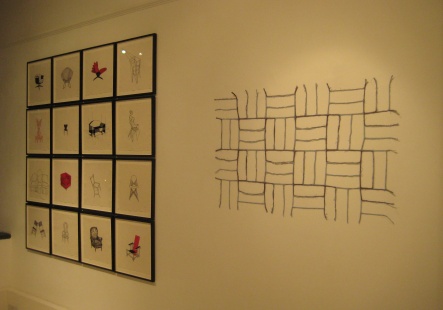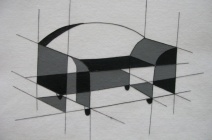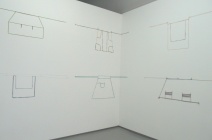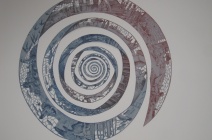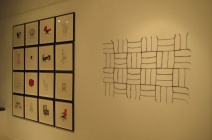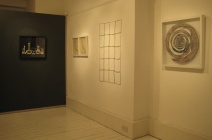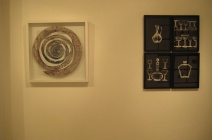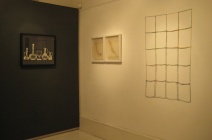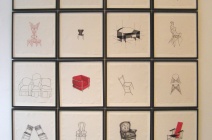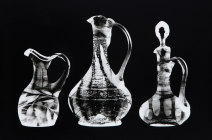Intimation of Presence
Intimation of Presence
Works that hint and allude; nothing is quite what we expect. Stitches and seams describe a cloth that no longer exists. Etchings and collages explore the human psyche and dreamscapes. Iconic chairs, delicately drawn with individual cotton threads. Photograms of Victorian lace and crystal, a shadow of their existence.
Pip Culbert’s deconstructs clothing and other fabrics, removing all of the fabric apart from the seams. Delicate, this process reveals a skeletal structure of the garment or object. A patchwork bed cover is deprived of its warming essence and becomes a geometrical structure of memories. The remnants assume ghostly silhouettes and the holes become more evocative than the parts. Pip translates cloth into a pictorial format, transforming three dimensional garments into two dimensional forms where depth is simulated and the viewer is invited to fill in the gaps. Her works emerge as stitched reliefs that relate to folk traditions. Pip Culbert graduated in Industrial Design, Engineering, at the Royal College of Art.
Míla Fürstová works in print and collage, bringing together these two and three dimensional mediums. While overlaying, embossing, printing and cutting the paper, she layers and integrates fantastical stories in monochrome dusty burgundies or cloudlike greys. Narrative landscapes are etched onto an unraveling flower-like ribbon and Míla’s stylised figures illustrate a timeless and mystical existence including a woodland fantasy installed into an imagined London skyline. Míla creates poetic imagery that she describes as an intimate portrayal of humanity. Born in Czechoslovakia, Míla studied at the Charles University of Prague and the Royal College of Art. She lives and works in Gloucestershire.
Using single strands of thread, Jane Goodwin has created a series of drawings of iconic chairs inspired by the pure aesthetics of Japanese Designer Shiro Kuramata (1934-91). Kuramata’s work, How High the Moon (1986) has an intangible quality; the chair almost dematerialises before our eyes, evoking a poetic representation of volume and form. Despite the fragility of her chosen medium, Jane explores the sculptural qualities of the chair, as well as the chairs’ perceived personalities. On a functional level a chair must give support. On a psychological level, connections are made both consciously and subconsciously, through aesthetics, emotions, intellect and possibly spiritually. We are touched not only by the object, but also with the human creator. Jane works in London and in Spain.
Susie Needham works with photograms by placing translucent objects on top of light sensitive photographic paper. Light diffuses through crystal decanters and picks through the intricacies of cut glass vessels showing details from when the old and fragile glass was blown or spun. The delicate German jug has a decorative filigree painting over its surface and the varied thickness of the glass affects the light passing through. Susie’s work records objects, each with their own unique histories, and presents them in new contexts. Following her exhibition at the Fox Talbot Museum, Lacock Abbey, Wiltshire, Susie presents a life sized lace and gossamer dress worn by Lee Miller or an elaborate Victorian Christening gown, each with their own unique and personal stories. The images evoke different impressions of freedom and tension, light and dark, form and line. These works explore the nature of absence and presence within the white shadows drawn by the light onto photosensitive paper. With the increasing scarcity of large format photographic paper, this process is becoming rare.

